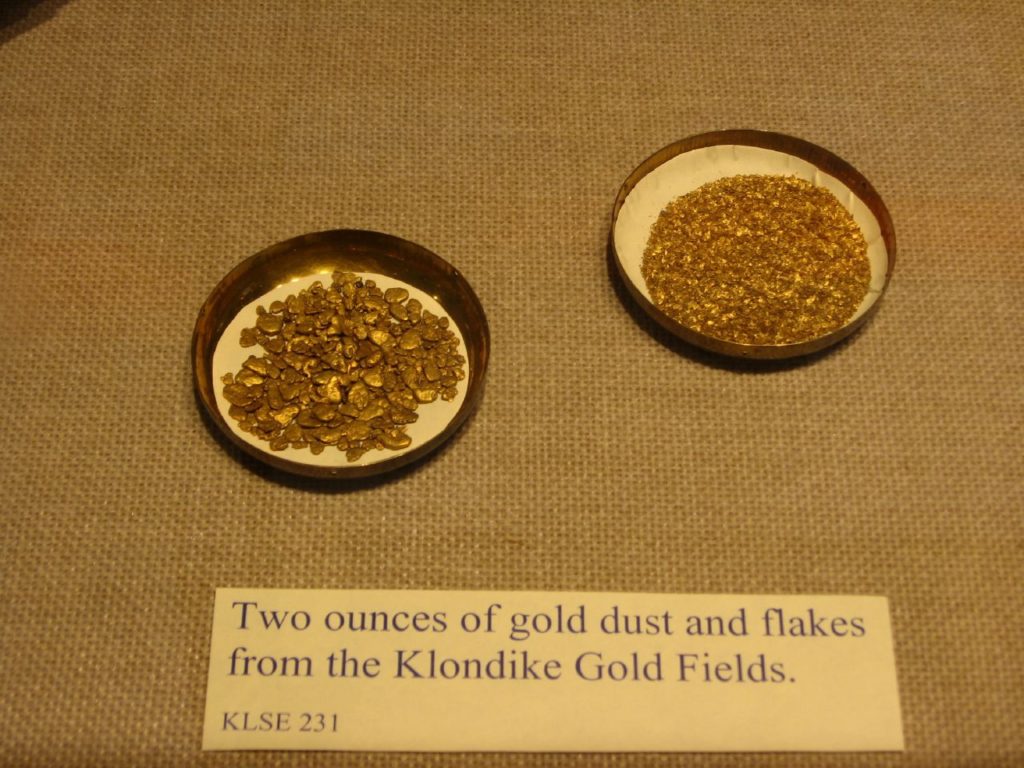
Posted in: Exhibitions
 Exhibition at the Klondike Gold Rush Museum in Seattle. Photo courtesy Flickr.
The Klondike Gold Rush brought gold to the forefront in Seattle between the years 1897 and 1899. It singlehandedly increased the population and stimulated the economy for years following.
Exhibition at the Klondike Gold Rush Museum in Seattle. Photo courtesy Flickr.
The Klondike Gold Rush brought gold to the forefront in Seattle between the years 1897 and 1899. It singlehandedly increased the population and stimulated the economy for years following.
The Klondike Gold Rush
It began when Skookum Jim, his sister Kate Carmack, and her husband George Washington Carmack found gold in a tributary of the Klondike River in Canada’s Yukon Territory. The next year, the Portland docked at the pier in Seattle, unloading hundreds of eager gold prospectors ready to make the trek north into the Yukon. Over the next few months, Seattle hosted thousands of visitors, becoming the gateway city to the Klondike. Rather than joining the ranks of gold diggers, most of Seattle’s merchants took advantage of the influx of prospectors. They began stocking the necessary supplies the men and women would need to make the long and treacherous 600 mile trek across the snowy Canadian terrain. By the end of the rush, Seattle outfitted over 30,000 of Canada's 70,000 goldseekers. It’s possible that the Klondike Gold Rush put Seattle on the map. From then on, the city prospered and was able to completely rebuild after the tragic fire of 1889.The Klondike Gold Rush Museum
Given the importance of the Gold Rush to the city, the National Park Service opened a branch of their Klondike Gold Rush Museum in Seattle. The museum is housed in the former Cadillac Hotel, a building built during the Gold Rush years. Inside, visitors can view several different collections. One such collection is the Hielscher Collection. John Hielscher lived in Seattle during the rush. In 1897, fully outfitted for the journey, Hielscher headed to the Klondike to search for gold himself. One of many who stayed in the Klondike for the duration of the rush, Hielscher remained in Canada for 15 years. Though he did not return with much gold, he did make a solid living providing support for the many stampeders who passed through the territory. His wife and son remained in Seattle, so in between running hoists along the trail and selling merchandise at the outposts, Hielscher made short trips home to Seattle to visit and bring money back to his family. In 2008, Hielscher’s descendants delivered a steamer trunk full of memorabilia from his time in the Yukon. These items are now on display at the Klondike Gold Rush Museum in Seattle. These items include all of his tools, his correspondence, and other historical documents.History & Ethnology Collections
The other two collections on exhibit include items related to the gold rush. The History Collection includes boats, chairs, buttons, cups, and even a streetcar. Most of these items were unearthed during archaeological digs undertaken in Skagway, one of the towns that sprang up during the rush. Most of them relate to daily life, as opposed to being specific to the prospecting efforts. The Ethnology Collection features a number of items from the Tlingit people. The Tlingit are Native Americans that lived in the Klondike region during the gold rush. Items in this collection include hand woven baskets, beaded regalia, and handmade garments. The Klondike Gold Rush Museum in downtown Seattle is open daily from 10AM to 5PM in the winter. From Memorial Day to Labor Day, the museum opens at 9AM. For more information, visit the NPS website.6 years ago
4 view(s) 